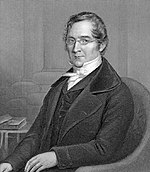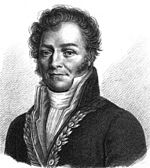Boron
![]()
The title of this article is ambiguous. For other meanings, see Boron (disambiguation).
Boron is a chemical element with the element symbol B and the atomic number 5. In the periodic table it is in the 3rd main group, or the 13th IUPAC group, the boron group, as well as the second period. The trivalent rare semimetal occurs in the form of its oxygen compounds as borax and kernite in some deposits worth mining. Boron exists in several modifications: Amorphous boron is a brown powder, and crystalline boron is known to have several allotropic modifications.
Boron compounds find a wide range of applications in various branches of industry. The detergent industry uses boron compounds such as sodium perborate on an industrial scale as bleaching agents. The glass industry uses boron in the form of its borax compounds for the production of glasses and ceramics with high chemical resistance and thermal shock resistance. Elemental boron is used in the semiconductor industry for doping. Boron polymers and ceramics play a role in the production of high-strength lightweight and refractory materials. Boron carbide exhibits high hardness and is used as an abrasive. For brazing, boron compounds are used as fluxes. In hydroboration, boron reagents are used for the synthesis of organic fine chemicals. Natural boron consists of two stable isotopes, of which 10Boron is suitable as a neutron absorber.
Borates have low toxicity to mammals but are toxic to arthropods and are used as insecticides. Boric acid has weak antimicrobial activity; natural antibiotics containing boron are known. Boron may be an essential trace element. In agriculture, boron fertilization improves the stabilization of plant cell walls and has an important function in cell division, cell differentiation, cell elongation and tissue formation of plants as well as in nucleic acid metabolism, protein synthesis and energy metabolism.
History
Boron compounds (from Persian بوره burah via Arabic بورق buraq and Greek βοραχου or Latin borax "boric soda", "borax") have been known for millennia. In ancient Egypt, the mineral sodium bicarbonate, which contains borates among other compounds, was used for mummification. Borax glass has been used in Imperial China since the 4th century. Boron compounds were used in ancient Rome for glass production.
It was not until 1808 that Joseph Louis Gay-Lussac and Louis Jacques Thénard produced boron by reducing boron trioxide with potassium, independently of this somewhat later Sir Humphry Davy by electrolysis of boric acid. In 1824 Jöns Jakob Berzelius recognized the elemental character of the substance. The American chemist W. Weintraub succeeded in preparing pure crystallized boron in 1909 by reducing gaseous boron trichloride with hydrogen in an electric arc.
Occurrence
Like the two elements preceding it in the periodic table, lithium and beryllium, boron is a remarkably rare element in the solar system. The rarity of these three elements is explained by the fact that they are not products of the stellar nuclear fusions that lead to element formation (nucleosynthesis). The hydrogen burning leads to helium atoms, the subsequent helium burning (the three-alpha process) already to carbon atoms. Boron is formed exclusively during the spallation of heavy atomic nuclei by cosmic radiation.
Boron is found on earth only in oxygenated compounds. Large deposits are located in Bigadiç, a district of the Balıkesir province in western Turkey, on the Mojave Desert in the USA and in Argentina. Staßfurt potash salts contain small amounts of associated boracite.
The largest borate mines are located near Boron (California) (the Kramer deposit) and in Kırka (Turkey). The minerals mined are borax, kernite and colemanite.
In water, boron occurs predominantly as undissociated boric acid.
Boron occurs in seawater at concentrations of 4-5 mg/l. In marine air, 0.17 μg/m3 has been measured (WHO, 1996).
An average of 500 μg/l boron was measured in mineral waters, with a range of values from less than 20 μg/l to 3.23 mg/l.
The content in groundwater as well as in inland waters in Germany is in the range of 10 to 50 μg/l, whereas in Baden-Württemberg a background value (without anthropogenic influence) in groundwater of 50 μg/l is assumed.
In Germany, an average of 16 ng/m³ has been measured in outdoor air and values of 10 to 210 μg/l in drinking water. In soil, the concentration of borax is between 88 and 177 mg/kg based on dry weight.
In Switzerland, natural boron levels in river water are assumed to be around 10 μg/l and in groundwater up to 40 μg/l, while actual levels in rivers and lakes can be up to over 200 μg/l and drinking water contains an average of around 20 μg/l and a maximum of 60 μg/l boron.
Plants need boron and the content in dry matter is 30-75 ppm. Humans absorb boron through drinking water and food. In the body there is a content of about 0.7 ppm.
Search within the encyclopedia

